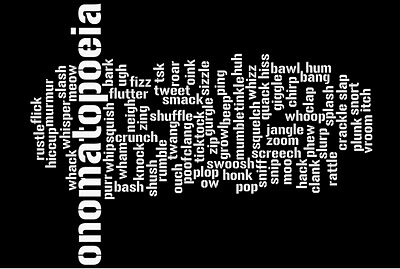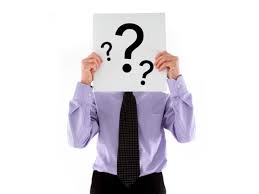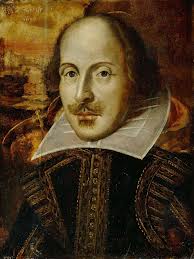What is onomatopoeia?
Onomatopoeia is the use of a word that denotes a
- sound suggested by the phonetic quality of the word, or
- thing that produces such a sound.
EXAMPLES!!!
All Onomatopoeia Words are Underlined and Written in Italic
1 - Cock-a-doodle-do, crowed the rooster.
2 - The clock goes ticktock.
3 - The cow says moo all day long.
4 - With the click of a mouse I can open another window on my computer.
5 - The duck quacked at the bird.
6 - Zip up your pants.
7 - The birds like to tweet outside my window.
8 - Don't belch so loud.
9 - I was so cold my teeth were chattering.
10 - I heard the bees buzzing.

What is italics?
We use italics to distinguish certain words from others within the text.
Names of Vehicles
- Challenger
- Titanic
- Orient Express
Foreign Words or Phrases
- If a word or phrase has become so widely used and understood that it has become part of the English language — such as the French "bon voyage" or the abbreviation for the latin et cetera, "etc." — we would not italicize it. Often this becomes a matter of private judgment and context. For instance, whether you italicize the Italian sotto voce depends largely on your audience and your subject matter.
For Emphasis
- I really don't care what you think!
- These rules do not apply to newspaper writing.
Titles
Generally, we italicize the titles of things that can stand by themselves. Thus we differentiate between the titles of novels and journals, say, and the titles of poems, short stories, articles, and episodes (for television shows). The titles of these shorter pieces would be surrounded with double quotation marks.
In writing the titles of newspapers, do not italicize the word the, even when it is part of the title (the New York Times), and do not italicize the name of the city in which the newspaper is published unless that name is part of the title: the Hartford Courant, but the London Times.
- Journals and Magazines:Time, U.S. News and World Report, Crazyhorse, Georgia Review

What is rhyme?
A rhyme is a repetition of similar sounds in two or more words, most often at the end of lines in poems and songs

What is the function of rhyme in poetry?
The function of rhyme in poetry is to establish structure while creating a pleasant or even beautiful symmetry among a poem’s verses. In the ages before the written word, rhyme also assisted with memorization, a role it still performs today. Not all poems rhyme, and not all rhymes are poetry; rhyme is also employed in songwriting and advertising copy, for example. The use of rhyme in poetry, however, is the most common application of both, learned by most people while they are still children. To many people, in fact, any rhyme is a poem and vice versa.
Rhyming verse is one of the oldest literary forms, predating the establishment of writing itself. There is good reason for this: Many primitive cultures used oral, or spoken, narratives to relay important aspects of their history and culture to younger generations. Rhyme is a powerful mnemonic, or memory aid, so many of these narratives were put in rhyming-verse form by bards and poets. Rhyme continued to be used for this function until relatively recent times, as literacy was not widespread until the 19th and 20th centuries.

William Shakespeare, for example, was expert at using rhyme in poetry and drama alike. In his plays, he would often end an act by having a character speak a rhyming couplet, such as The play’s the thing\Wherein I'll catch the conscience of the King.” In Shakespeare’s time, poets often used complex rhyme schemes. For example, the sonnet, a poetic form often employed by Shakespeare, employs several quatrains, in which four lines share two rhymes, followed by a single set of rhyming lines. Other poetic forms in use at the time, such as the sestina, employ even more complicated rhyme schemes.

